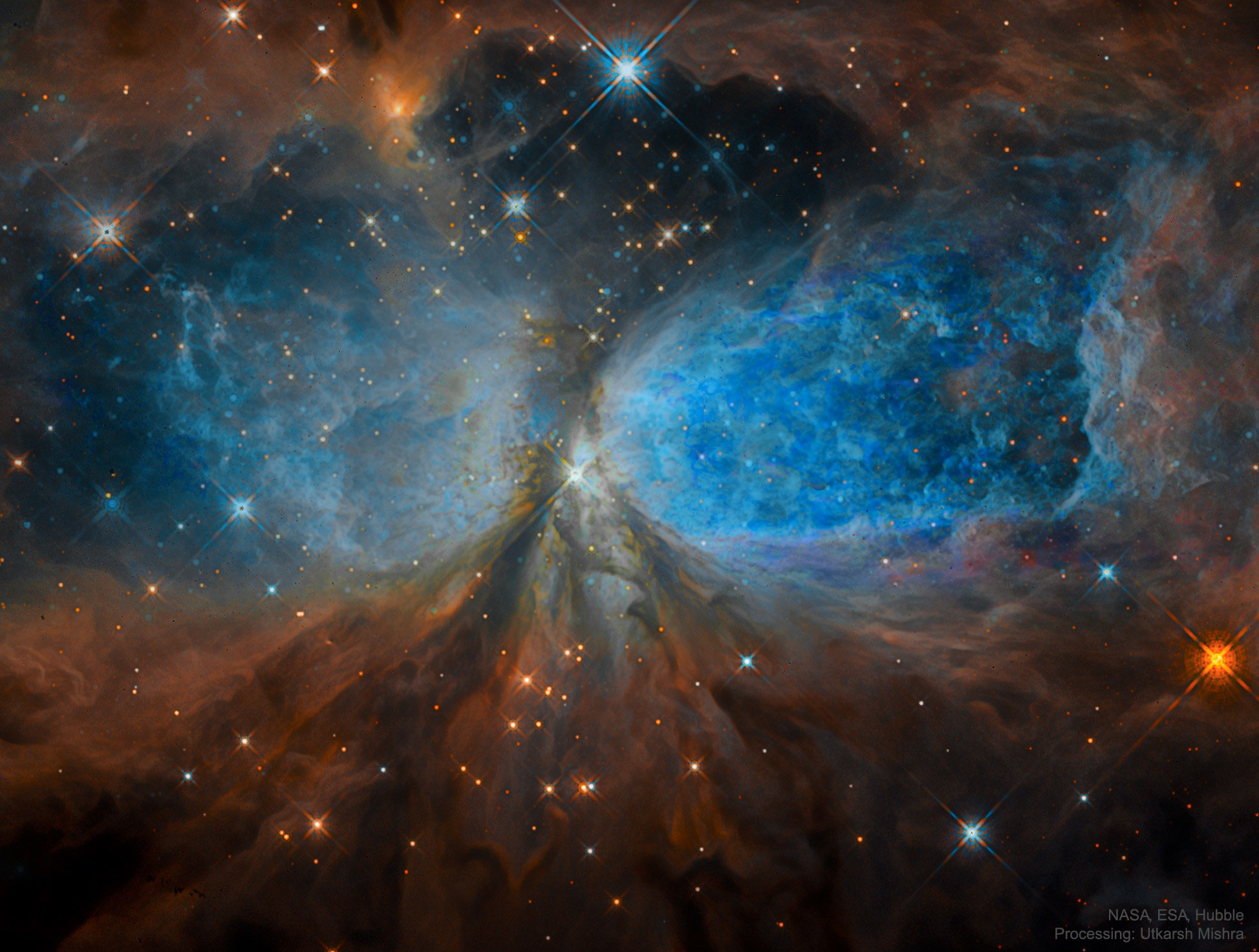恒星生成区S106
2020 March 25
Star Forming Region S106
Image Credit: NASA, ESA, Hubble Legacy Archive; Processing & Copyright: Utkarsh Mishra
Explanation: Massive star IRS 4 is beginning to spread its wings. Born only about 100,000 years ago, material streaming out from this newborn star has formed the nebula dubbed Sharpless 2-106 Nebula (S106), featured here. A large disk of dust and gas orbiting Infrared Source 4 (IRS 4), visible in brown near the image center, gives the nebula an hourglass or butterfly shape. S106 gas near IRS 4 acts as an emission nebula as it emits light after being ionized, while dust far from IRS 4 reflects light from the central star and so acts as a reflection nebula. Detailed inspection of a relevant infrared image of S106 reveal hundreds of low-mass brown dwarf stars lurking in the nebula’s gas. S106 spans about 2 light-years and lies about 2000 light-years away toward the constellation of the Swan (Cygnus).
Tomorrow’s picture: Andromeda Station
恒星生成区S106
影像来源:NASA,ESA,Hubble Legacy Archive;处理及版权:Utkarsh Mishra
说明:大质量恒星IRS4开始舒展双翅。从这颗10万年前刚刚诞生的新生恒星中流出的物质形成了被称为Sharpless2-106(S106)的星云,如图所示。在图像中心的棕色区域显示出一个很大的尘埃和气体盘在围绕着红外源4号(IRS4)旋转,这使得星云呈现为沙漏或蝴蝶的形状。S106在IRS4附近的气体被电离后发光而成为了发射星云;同时,远离IRS4的尘埃反射着来自中央恒星的光,形成了反射星云。对相关的S106红外图像的仔细研究发现,有数百颗低质量褐矮星隐藏在星云的气体之中。S106的跨度约为2光年,位于天鹅座中,距离我们约有2000光年。
明日一图预告:Andromeda Station


好美不是吗